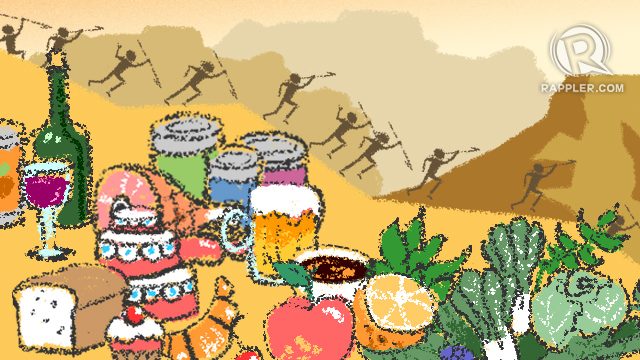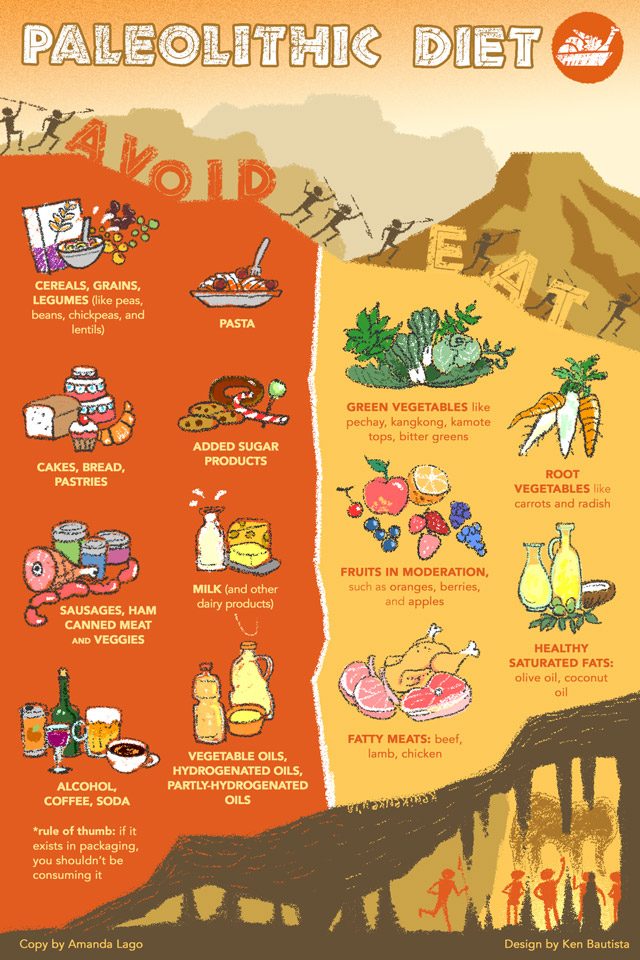SUMMARY
This is AI generated summarization, which may have errors. For context, always refer to the full article.

Of the many fad diets that exist today, the paleolithic diet (also called the primal diet) stands to defy the test of time. Foregoing the development in modern age to extremes, the paleo diet, as it is more commonly called, takes the cue of our hunter-gatherer forefathers and attempts to imitate the protein-heavy and grainless menu they enjoyed before the development of agriculture.
It follows the tale that our bodies were geared to consume the meat and vegetables eaten by our more physically fit ancestors. It believes that the strides into preserving, cultivating, and innovating how we eat has hindered us from living a truly more wholesome lifestyle, while also inviting modern illnesses into our bodies.
This philosophy originated from the writings of Dr. Walter Voegtlin who wrote in his book, The Stone Age Diet, the dangers of modern food industry’s marketing agenda while advocating the benefits of the prehistoric man’s diet.
Eating like the cavemen of yesteryears does not require much fuss. The diet functions on minimal carbohydrate and sugar consumption, relying on starchy vegetables like sweet potato and yams and fruits as sources of sugar, using fat instead to fuel the body. It promotes the consumption of various proteins like fish, beef, chicken, and ofal in conjunction with leafy greens, nuts and healthy oils. The diet also puts a premium on fat utilizing the process of ketogenesis to produce energy by converting stored fat rather than sugar into energy.
What not to eat
To fully commit to a caveman diet doesn’t mean taking the pleasure in food, however, it does call for a great amount of restriction in the things we eat. Prehistory did not know the existence of grain, legumes, dairy products, and processed food – this includes alcohol, coffee, and other drinks, thus we must abstain from these as well.
The diet heavily discourages the consumptions of grains, primarily due to the lectin and gluten present in them. Gluten is the protein that allows bread to rise and gives it that chewy quality, however it is also found to have numerous adverse effects on those intolerant to it. Lectins are proteins heavily present in grains, and function as its defense against microorganisms, pests and insects. These proteins are indigestible and can cause tearing in the gut wall. Normally, the body can heal these without much worry, but lectins pose a stunt in this process, which leads the gut to become “leaky” allowing molecules good and bad to pass through. This can also lead to inability to absorb important vitamins and minerals.
Gluten is found in wheat, barley, rye, oats, and its byproducts. The most well known byproduct being flour, which means pasta, cakes, bread, and pastries are completely off limits. However, it is important to note that rice is completely gluten free, this includes malagkit or glutinous rice, which gets its name from its sticky nature rather than it chemical makeup.
Processed foods should never touch your hands. The rule of thumb is that if the food is packaged, you should not be consuming it. Processed foods contain high levels of sodium, sugar and preservatives, all of which heavily documented to cause a host of diseases and complications in the body. Examples of processed foods include sausages, ham, canned meats and vegetables, bread, and packaged drinks like milk and soft drinks.
Though fat has been vilified for centuries, more recent studies have shown that sugar – processed sugar in particular – is the main cause of our weight gain. The diet wants to minimize the consumption of sugar, only accepting fructose from fruits.
However, not all fat is created equal, the diet recommends taking out vegetable, hydrogenated and partly-hydrogenated oil, such as peanut and cottonseed, as these will promote the increase of bad cholesterol production and promotes illnesses like heart disease, stroke, and diabetes.

What to eat
Unlike other diets that limit consumers to counting calories, the paleo diet advocates consuming food when hungry. It relies on fatty meats like beef, lamb, and chicken, and healthy saturated fats like olive and coconut oils to create energy through ketogenesis.
The diet also recommends pairing high protein intake with a lot of frozen or raw vegetables served raw or cooked with fat. Mix up bitter greens like pechay, kangkong, and kamote tops with root vegetables like carrots, radish for variety and texture. It’s recommended to lessen consumption of starchy veggies like sweet potato and taro, as this will make losing weight harder. Nuts and fruits should be consumed with a little more restraint, limiting it to moderate consumption, it’s recommended to totally forego fruits and nuts if you want to shed weight faster. Limit the consumption of peanuts, walnuts, and cashew to small snacks you munch on throughout the day. Fruits can be eaten liberally, consuming oranges, apples, and berries as dessert after meals.
The diet does not promote portion control, rather it attempts to develop a lifestyle which involves choosing better and more wholesome food so that people can consume whole and filling meals without having to fear intaking a disproportionate amounts of sugar and carbohydrates.
Pitfalls and Better Beginnings
Of all the good that an all natural diet calls, there are also setbacks that can potentially hamper your relationship with food in the long run. As with any restrictive diet, it runs the risks of creating an unhealthy relationship with food, creating obsessive behavior that can potentially become eating disorders.
However, the diet does share a positive message of choosing better rather than dialing into counting calories and making the process of eating a mathematical equation. This can become a great starting point for those wanting a change of pace to modern diets.
In the end, the diet emphasizes a valid point of better eating rather than counting calories. People who want to eat better without limiting how much they eat, will find the Paleo diet more palatable. The diet might also help those who need to control blood sugar or sodium levels. It leaves more opportunity to enjoy a meal, rather than limit consumption. – Rappler.com
Add a comment
How does this make you feel?
There are no comments yet. Add your comment to start the conversation.